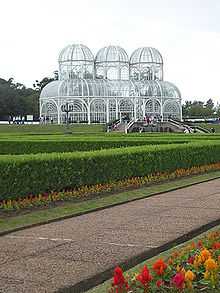Celosia argentea
| Celosia argentea | |
|---|---|
 | |
| Scientific classification | |
| Kingdom: | Plantae |
| (unranked): | Angiosperms |
| (unranked): | Eudicots |
| (unranked): | Core eudicots |
| Order: | Caryophyllales |
| Family: | Amaranthaceae |
| Genus: | Celosia |
| Species: | C. argentea |
| Binomial name | |
| Celosia argentea L. | |
| Synonyms[1] | |
| |
Celosia argentea, commonly known as plumed cockscomb, or the silver cock's comb,[2] is a herbaceous perennial plant of tropical origin, and is known for its very bright colors. In India and China it is known as a troublesome weed.[3]
Description
Celosia argentea is a tender annual that is often grown in gardens. It blooms in mid-spring to summer. It is propagated by seeds. The seeds are extremely small, up to 43,000 seeds per ounce.[4] The flowers are hemaphrodites.
Cultivation

As these plants are of tropical origin, they grow best in full sunlight and should be placed in a well drained area. The flowerheads can last up to 8 weeks, and further growth can be promoted by removing dead flowers.[4]
_W_IMG_0985.jpg)
Cultivars
Celosia argentea var. cristata 'Flamingo Feathers' is a cultivar that can grow up to 2 feet in height. The colors are predominantly pink to light violet, and the leaves are a darker green than other cultivars. The Century cultivars are usually taller (1–2 feet), and are bright red, yellow, orange, or pink. The Kimono cultivars are generally smaller (4 inches - 1 foot), and have more muted colors, though similar to the Century cultivars. Other colors, such as white, burgundy, orange-red, etc., can be found. Certain varieties will grow to 3–4 feet in height. [4] Celosia plumosa, also known as Prince of Wales Feathers,[5] is a synonym for Celosia argentea. Often sold as C. plumosa 'Prince of Wales Feathers'. Seeds may be sold as mixtures.
Taxonomic issues
Horticultural usage may be very confusing. For instance Celosia cristata may be listed as a separate species, or a variety of C. argentea. Other names for C. argentea var. plumosa include Celosia argenta var. pyrimidalis and C. spicata.[citation needed]
Other classifications consider three variants:
- C. argentea var. argentea
- C. argentea var. cristata
- C. argentea var. plumosa Voss
Uses
It is used in Africa to help control growth of the parasitic Striga plant. It can also be used in soaps.[6]
Food
_in_Hyderabad%2C_AP_W_IMG_7949.jpg)
The leaves and flowers are edible and are grown for such use in Africa and Southeast Asia.[7] Celosia argentea var. argentea or "Lagos spinach" is one of the main boiled greens in West Africa, where it is known as soko yòkòtò (Yoruba) or farar áláyyafó (Hausa)[8][9]
References
- ↑ "The Plant List: A Working List of All Plant Species".
- ↑ "Celosia argentea L.". USDA. Retrieved 13 December 2013.
- ↑ Grant, William F. (1954). A Cytological Study of Celosia argentea, C. argentea var. cristata, and Their Hybrids. The University of Chicago Press. pp. Vol. 115, No. 4 pp. 323–336.
- ↑ 4.0 4.1 4.2 "Cockscomb". Dave's Garden. Retrieved 13 December 2013.
- ↑ "Prince of Wales Feathers - Celosia plumosa".
- ↑ "Celosia". AVRDC. Retrieved 13 December 2013.
- ↑ Grubben, G.J.H. & Denton, O.A. (2004) Plant Resources of Tropical Africa 2. Vegetables. PROTA Foundation, Wageningen; Backhuys, Leiden; CTA, Wageningen.
- ↑ ECHO
- ↑ Hanelt et al., Mansfeld's encyclopedia of agricultural and horticultural crops, 2001 Google Books
External links
| Wikimedia Commons has media related to Celosia argentea. |
| Wikispecies has information related to: Celosia argentea |
![]() Media related to Celosia argentea at Wikimedia Commons
Media related to Celosia argentea at Wikimedia Commons